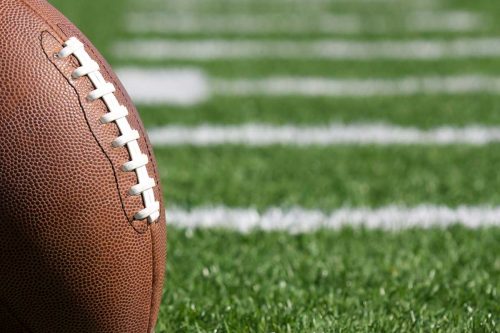Helmets are designed to protect the user's head. Some helmets, like football helmets, also have face masks. If a helmet is designed to protect the user from a head injury, why are football helmets also equipped with face masks? That's what we are here to discuss.
Football helmets are equipped with face masks so that they protect the player's face as well as their head. Before face masks and helmets were required, it was common for football players to become severely injured with concussions or broken noses. Single-bar face masks were first introduced in 1955 by Paul Brown to help prevent the common facial injuries most football players received. By 1962, face masks were worn by most players.
At its inception, football was played with no helmets, but slowly, helmets were added to the game and evolved to prevent injury. In this article, we will discuss the evolution of helmets and face masks over time. We will also talk about why different style face masks are used for different positions and what NFL face masks are made of. So, without further ado, let's get into it.
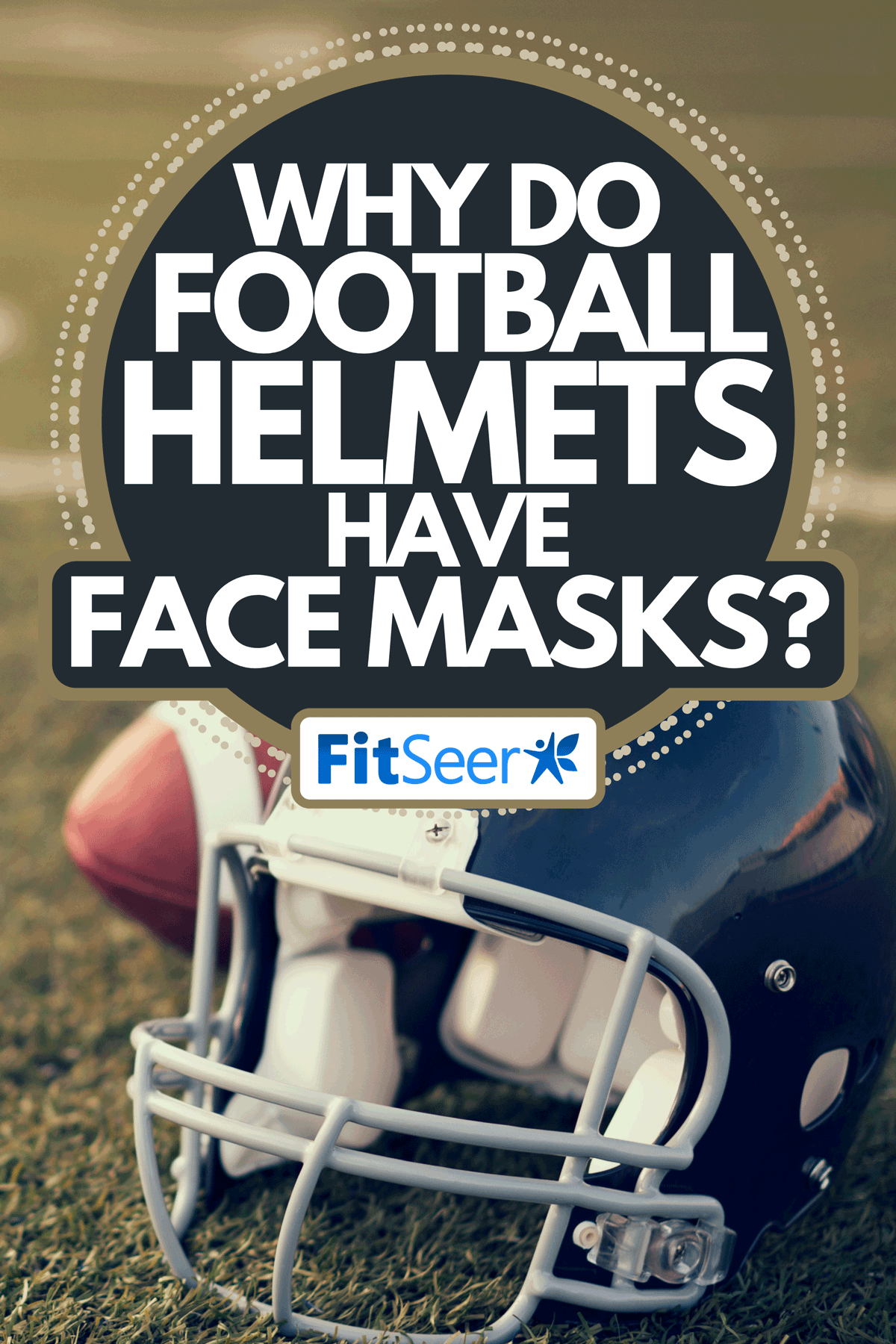
Evolution Of Football Helmets
While there are a few different stories about when football helmets were first invented, the earliest is the story of Admiral Joseph Mason Reeve. He was told by his doctor that he would go insane if he received another concussion. Admiral Reeve didn't want to stop playing, so he went to his shoemaker and had him make a moleskin hat with earflaps. This helmet was later briefly used by paratroopers in World War One.
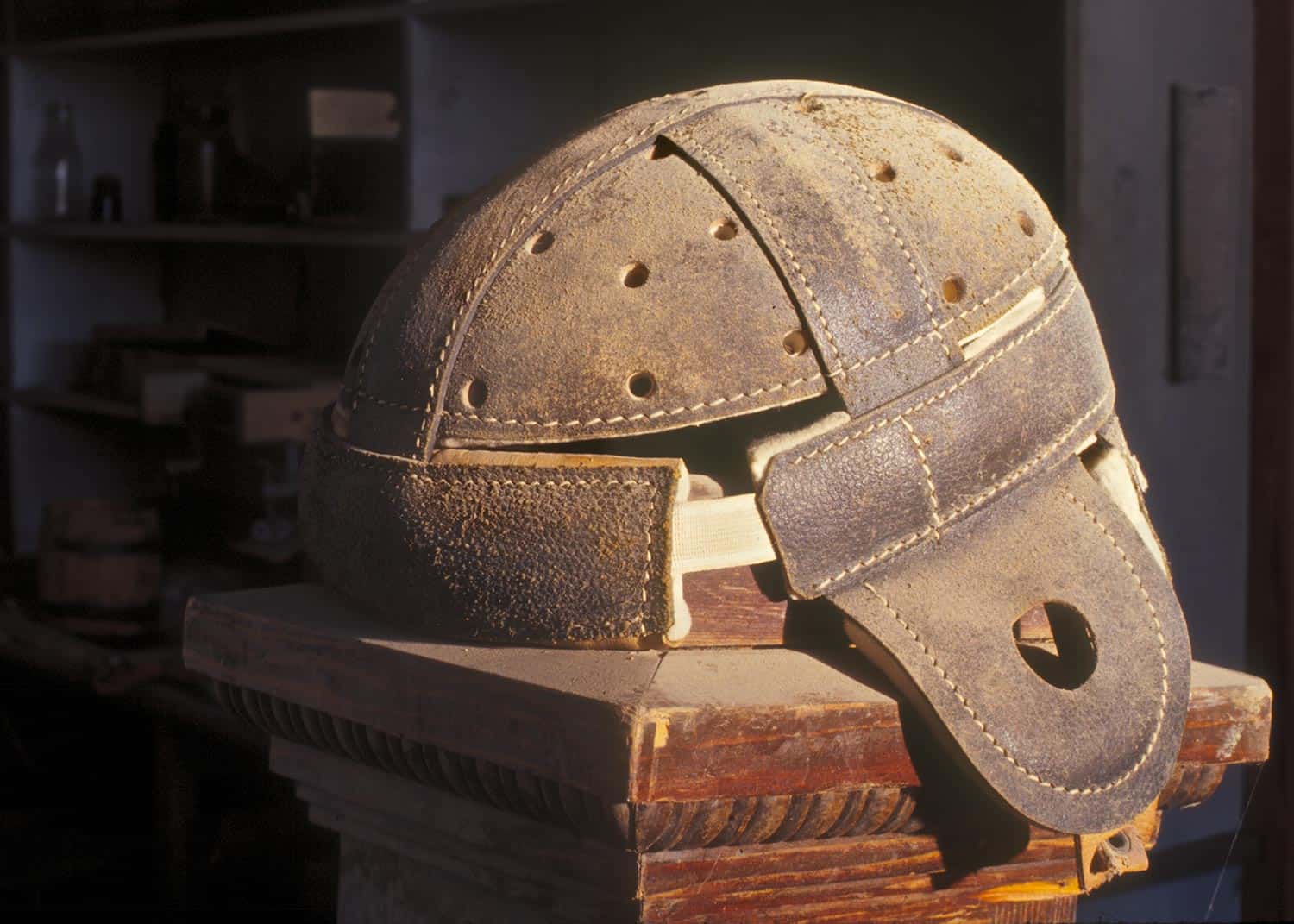
Introduction Of The First Plastic Helmet
Soft leather skull caps were worn in the early 1900s and were replaced by hardened leather by the 1920s, which provided more protection. John T. Riddell introduced the first plastic helmet in 1939. Unfortunately for him, plastic soon became hard to come by because of World War 2, which made his helmets obsolete.
Once the war ended, and he was finally able to put the helmets back into production, there was an issue with the plastic that caused the helmets to fall apart. As a result, the NFL banned the helmets until they fixed the problem a year later. Soon after, padded helmets were introduced.
When Did Football Helmets Get Face Masks?
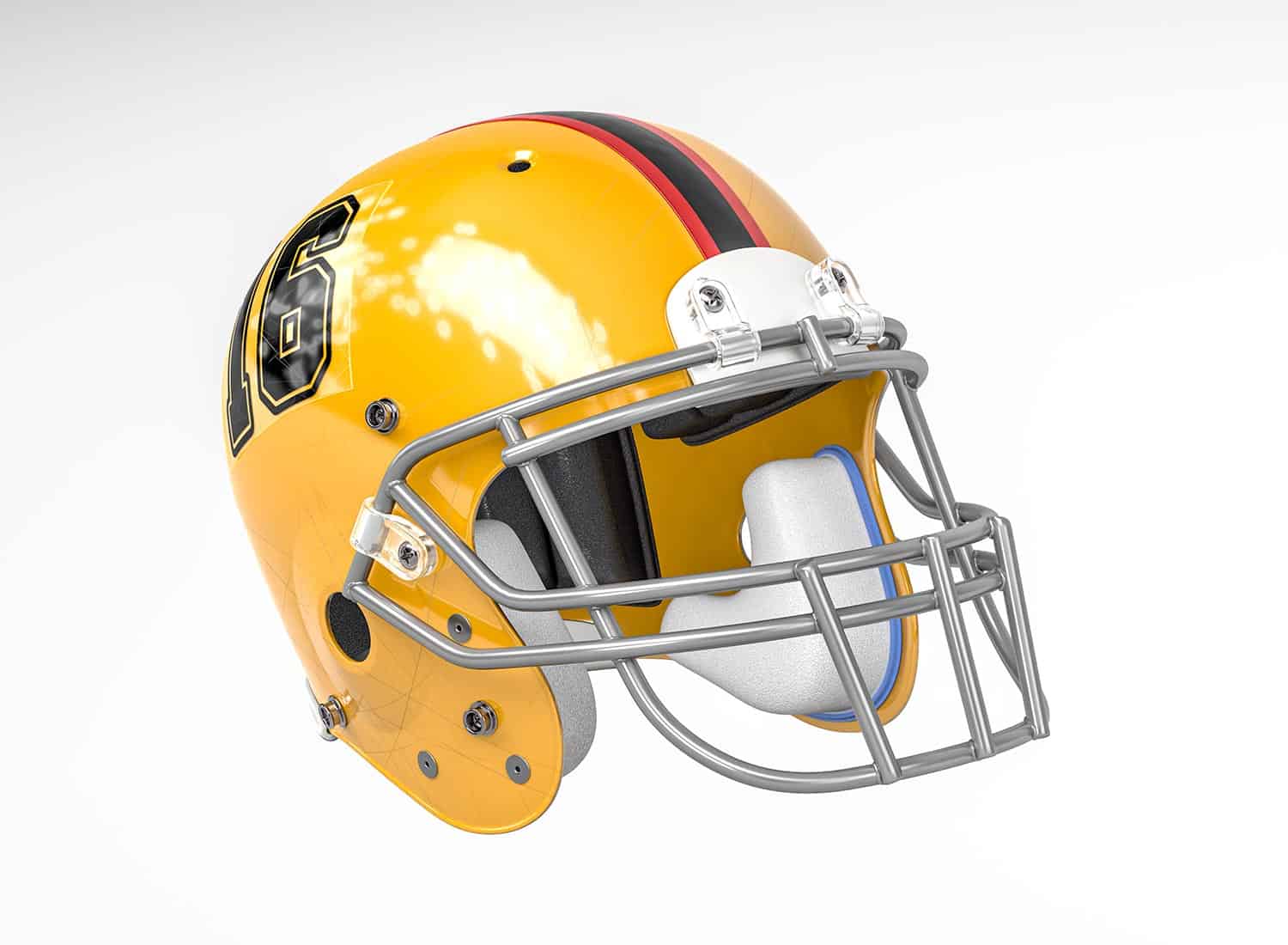
Up until 1955, football helmets were open. This meant that football players constantly had broken noses, black eyes, and other facial injuries. So, in 1955, the single-bar face mask was introduced.
Who Invented The Football Helmet Face Mask?
Paul Brown, who was Cleveland's professional football team's first coach, came up with the idea during a game after their quarterback took a really hard hit to the mouth. He wanted to find a way to keep him in the game, so he came up with the prototype for the first face mask.
They ended up winning the game and made all the Cleveland players a single-bar mask. After modifying the design a bit, Brown patented his idea and set up production with Riddell.
Over time, more face masks were invented. Thick padding was added to helmets in the 1960s and 1970s. The full face mask as we see it today was introduced in 1975. Once the 1980s hit, helmets weighed around 3 pounds each, had an outer shell made with polycarbonate over a layer of aluminum and vinyl foam over plastic and lined with leather, and were lined with pads to absorb the shock.
By 2004, the single-bar face mask was banned by the NFL, except for use by kickers due to the increased visibility. Professionals no longer use single-bar masks. The last time it was used on a professional field was in 2007.
Why Do Football Helmets Have Different Face Masks?
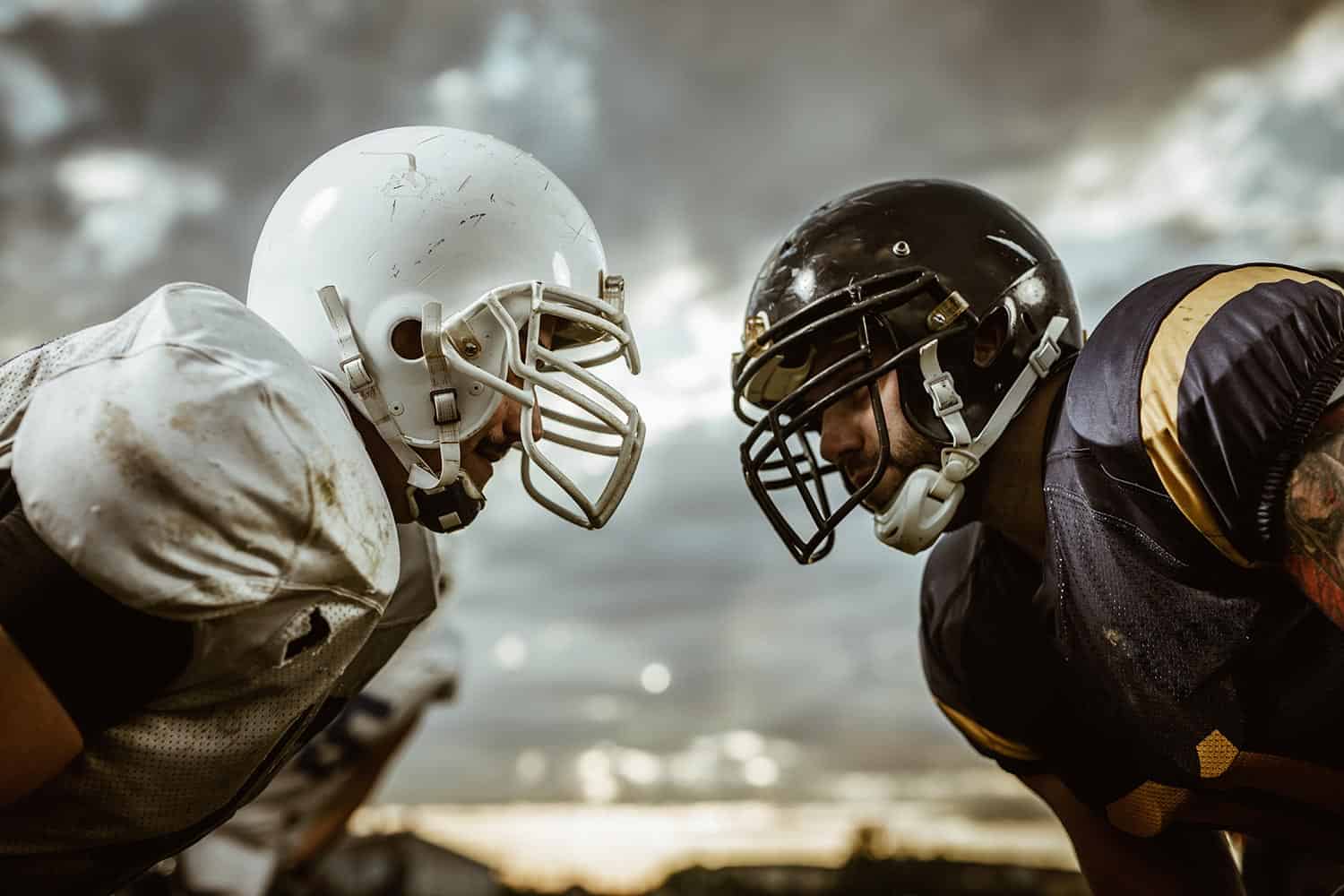
Different field positions require a different level of visibility and protection. For this reason, different face masks are used in different positions. There are many different types of face masks, but they generally fall into two categories: open cage and closed cage.
Open caged masks are for positions like quarterback, kicker, defensive back, wide receiver, and running back. These masks have bars from the nose down, but nothing in the eye area to allow maximum visibility. Some open caged masks also have an extra bar in the player's peripheral view or at the jawline for added protection.
For fullbacks, linebackers, defensive linemen, and offensive linemen, closed cage masks are ideal. These masks have tons of bars running along the bottom of the mask. Positions that require a lot of physical contact require full cages so you have maximum protection. However, your visibility will be limited.
What Materials Are Used To Make Football Helmets?
Most football helmets today are made with molded polycarbonate shells with foam padding inside. This foam padding is made with either polyurethane, polystyrene, polypropylene, or ethylene-vinyl acetate.
However, youth helmets are made with acrylonitrile butadiene styrene, also known as ABS. Youth helmets are designed for youth under 14. Varsity helmets, which are designed for players 14 and older, are made with polycarbonate.
The cost of your football helmet can vary greatly, depending on whether it is a varsity, youth, or adult helmet. A varsity helmet usually costs 30 percent more than a youth helmet. Helmets range from as little as $45 used to $400 new.
What Materials Are Used To Make Football Face Masks?
There are three standard materials used to create a football face mask. They are carbon steel, stainless steel, and titanium.
Carbon steel is the most affordable and most common material used. Face masks made of carbon steel cost between $15 to $50. It is durable but tends to be heavier than other materials. This type of face mask is best suited for younger or casual players.
Stainless steel face masks cost more than carbon steel and are more lightweight. It is recommended for more serious players and costs between $50 to $100 for a stainless steel face mask.
Masks made out of titanium are the best material and are used by professionals. Titanium is extremely lightweight and durable. However, it is the most expensive, costing $120 or more.
What Are NFL Face Masks Made Of?
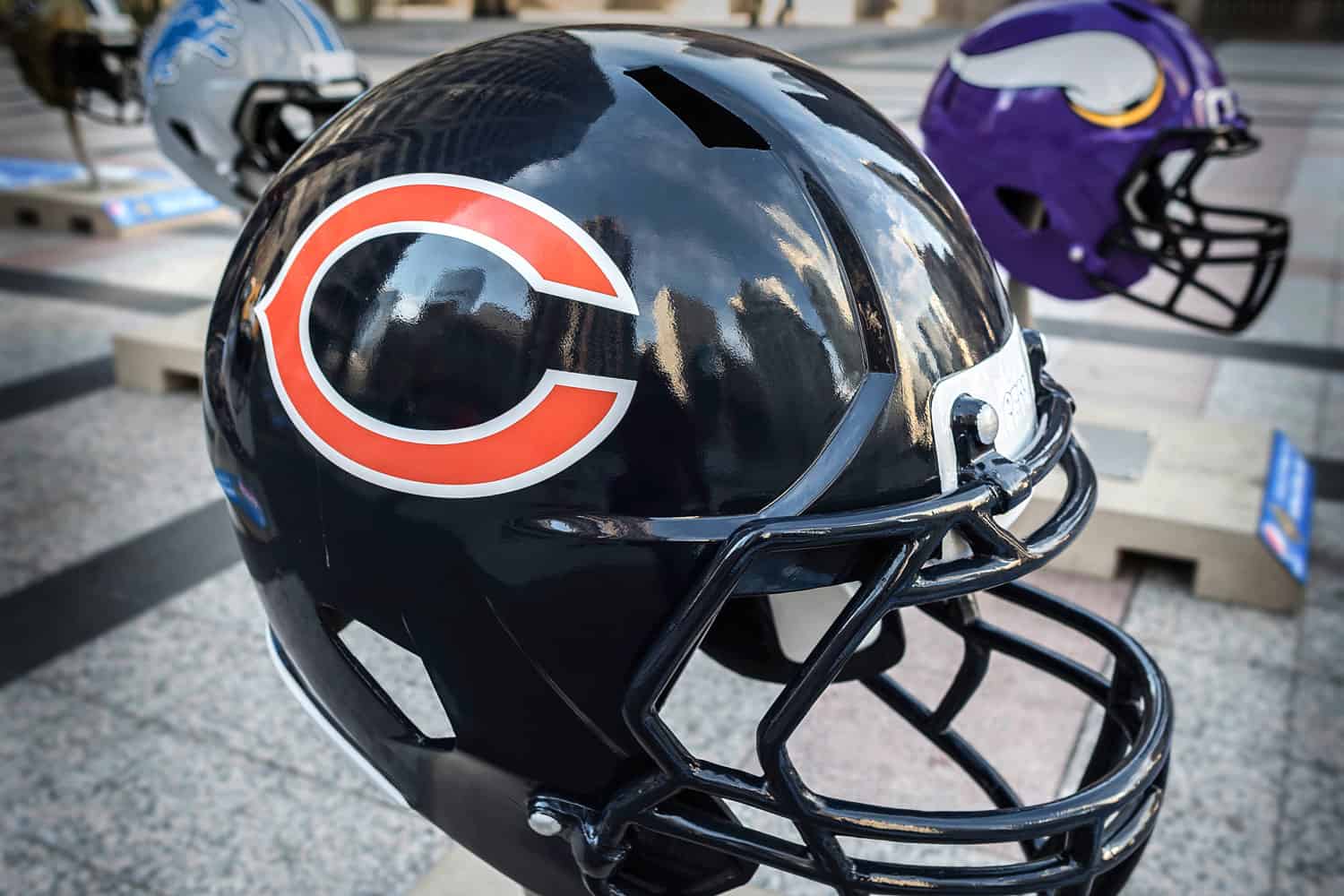
NFL players usually wear titanium face masks. This is because these masks are lightweight but provide excellent protection. This material will stand up to more hits than the other materials will. As a result, most NFL players use titanium masks.
Are Face Masks Bought Separately From Helmets?
When buying a football helmet, it is important to keep in mind that face masks are often bought as a separate item from the helmet. There are no universal face masks, so it is important to be sure you buy the correct face mask for your helmet and position.
To find the correct face mask, check the manufacturer's instructions with your helmet. Also, make sure you know which model works best for your position.
Why Are Big Grill Face Masks Illegal?
Big grill face masks have five or more horizontal bars and provided significantly more protection against fingers or hands to the face due to smaller spaces between the bars. It was made famous by Justin Tuck and Ray Lewis. If these masks offer more protection, why were they made illegal by the NFL?
The NFL felt that they were overbuilt and that their weight negatively affected how effective the helmet was against impact. As a result of the helmet's extra weight, it shifted the head's center of gravity towards the neck and could result in neck fatigue during tackling and head-down contact. As a result, the neck was more prone to injury.
The smaller spaces in the mask that provided extra protection caused an increase in risk to the tackling player. They were more likely to get their fingers caught and cause severe hand injuries, in addition to causing neck injuries to the wearer. As a result, they were made illegal by the NFL in June of 2014.
Closing Thoughts
Face masks are on football helmets to help prevent facial injury. When football first began, masks weren't a requirement and football often resulted in serious injury. Then, after the helmets were introduced, it became apparent there was a need for extra facial protection. Now, we have face masks.
Face masks are bought separately from your helmet and differ depending on what your position is. Now, you know a bit more about the history of football masks and helmets, as well as the answer to your original question.
If you enjoyed this post, click the links below to explore more content on this blog:


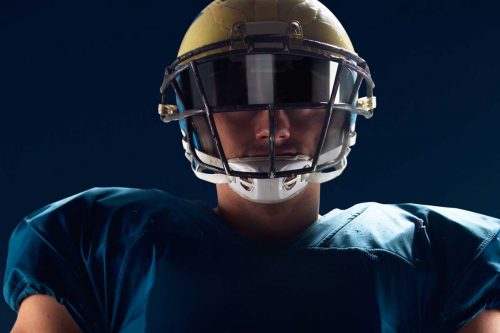
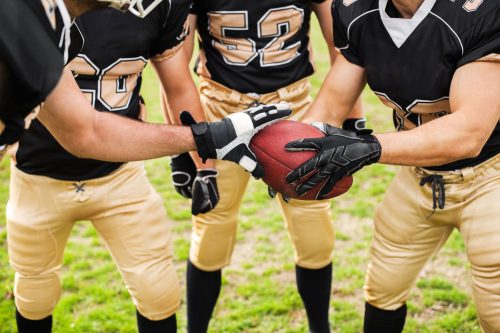
![Read more about the article Bowling Ball Finger Inserts Or Not? [Pros And Cons Discussed]](https://fitseer.com/wp-content/uploads/2022/05/Close-up-hand-of-woman-is-holding-ball-against-bowling-alley.-500x333.jpg)

